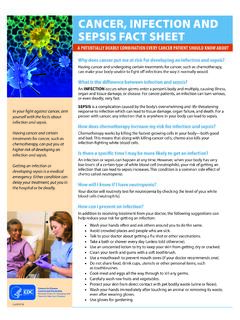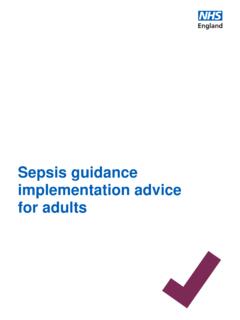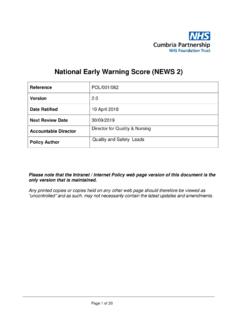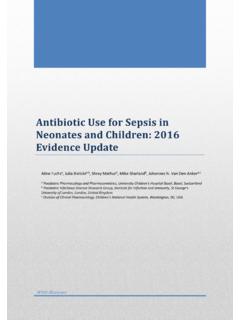Transcription of Life After Sepsis Fact Sheet.
1 CS257671 DLIFE After Sepsis FACT SHEETWHAT Sepsis SURVIVORS NEED TO KNOWMany survivors are left with life -CHANGING SEPSISWhat is Sepsis ? Sepsis is a complication caused by the body s overwhelming and life -threatening response to an infection, which can lead to tissue damage, organ failure, and causes Sepsis ?Any type of infection that is anywhere in your body can cause Sepsis . It is often associated with infections of the lungs ( , pneumonia), urinary tract ( , kidney), skin, and gut. An infection occurs when germs enter a person s body and multiply, causing illness and organ and tissue After SEPSISWhat are the first steps in recovery? After you have had Sepsis , rehabilitation usually starts in the hospital by slowly helping you to move around and look After yourself: bathing, sitting up, standing, walking, taking yourself to the restroom, etc.
2 The purpose of rehabilitation is to restore you back to your previous level of health or as close to it as possible. Begin your rehabilitation by building up your activities slowly, and rest when you are tired. How will I feel when I get home?You have been seriously ill, and your body and mind need time to get better. You may experience the following physical symptoms upon returning home: General to extreme weakness and fatigue Breathlessness General body pains or aches Difficulty moving around Difficulty sleeping Weight loss, lack of appetite, food not tasting normal Dry and itchy skin that may peel Brittle nails Hair lossLIFE After Sepsis FACT SHEETThis fact sheet was developed in collaboration with CDC, Sepsis Alliance and the Rory Staunton Foundation for Sepsis is also not unusual to have the following feelings once you re at home.
3 Unsure of yourself Not caring about your appearance Wanting to be alone, avoiding friends and family Flashbacks, bad memories Confusing reality ( , not sure what is real and what isn t) Feeling anxious, more worried than usual Poor concentration Depressed, angry, unmotivated Frustration at not being able to do everyday tasksWhat can I do to help myself recover at home? Set small, achievable goals for yourself each week, such as taking a bath, dressing yourself, or walking up the stairs Rest and rebuild your strength Talk about what you are feeling to family and friends Record your thoughts, struggles, and milestones in a journal Learn about Sepsis to understand what happened Ask your family to fill in any gaps you may have in your memory about what happened to you Eat a balanced diet Exercise if you feel up to it Make a list of questions to ask your doctor when you go for a check up Are there any long-term effects of Sepsis ?
4 Many people who survive Sepsis recover completely and their lives return to normal. However, as with some other illnesses requiring intensive medical care, some patients have long-term effects. These problems may not become apparent for several weeks (post- Sepsis ), and may include such consequences as: Insomnia, difficulty getting to or staying asleep Nightmares, vivid hallucinations, panic attacks Disabling muscle and joint pains Decreased mental (cognitive) functioning Loss of self-esteem and self-belief Organ dysfunction (kidney failure, respiratory problems, etc.) Amputations (loss of limb(s)What s normal and when should I be concerned?Generally, the problems described in this fact sheet do improve with time.)
5 They are a normal response to what you have been through. Some hospitals have follow-up clinics or staff to help patients and families once they have been discharged. Find out if yours does or if there are local resources available to help you while you get , if you feel that you are not getting better, or finding it difficult to cope, or continue to be exhausted call your can I get more information? Centers for Disease Control and Prevention (CDC) CDC works 24/7 protecting America s health, safety and security. Whether diseases start at home or abroad, are curable or preventable, chronic or acute, stem from human error or deliberate attack, CDC is committed to responding to America s most pressing health challenges.
6 The Rory Staunton Foundation for Sepsis Prevention Supports education and outreach efforts aimed at rapid diagnosis and treatment of Sepsis , particularly in children. Sepsis Alliance Created to raise Sepsis awareness among both the general public and healthcare professionals. Sepsis Alliance offers information on a variety of Sepsis -related topics. Visit to view the complete series of titles.














